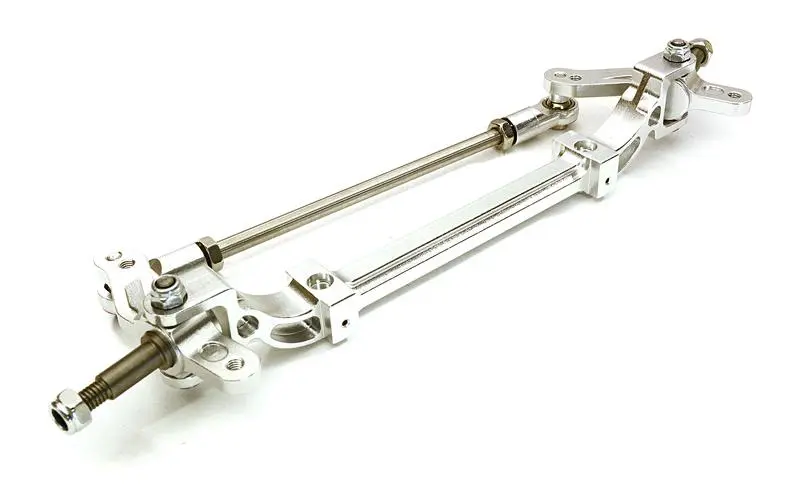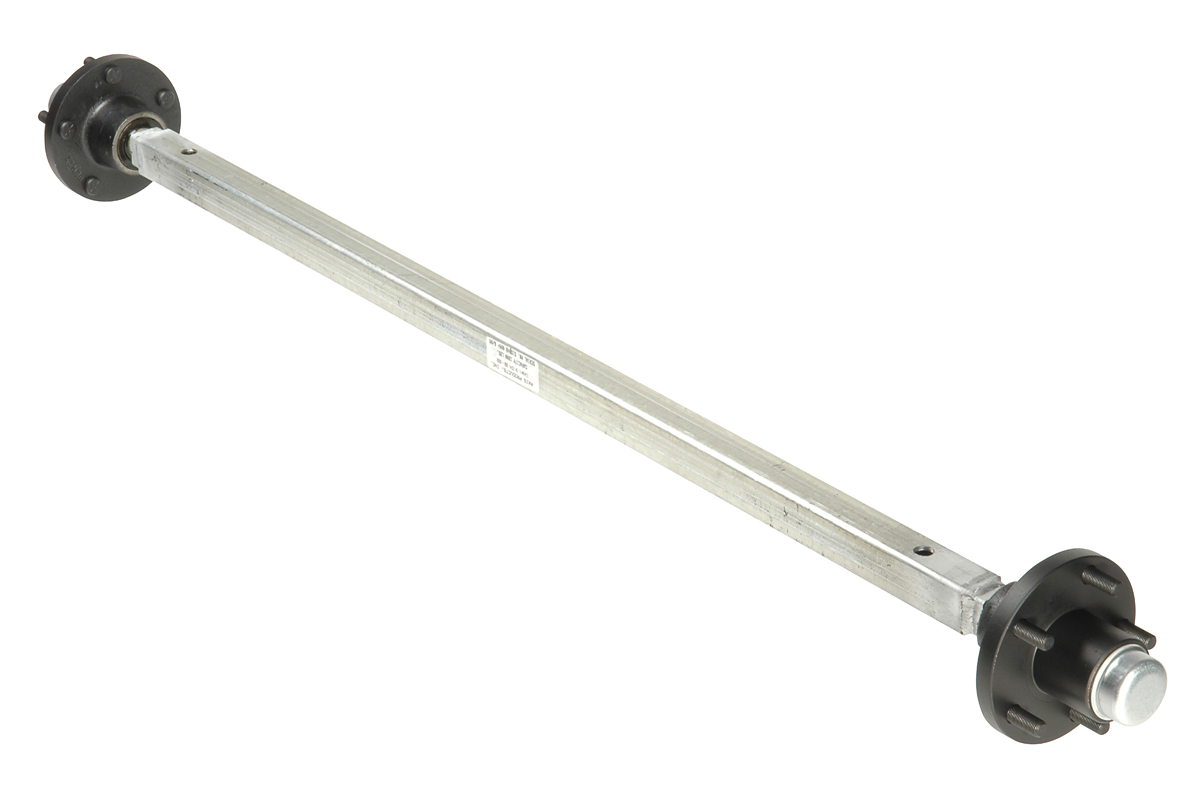Product Description
11ton 13ton Trailer Axle with Round Axle Beam
Company introduction:
ZheJiang CZPT Co.,Ltd is 1 of the major manufacturers specializing in the production of trailer axles.
Our company has high technological background, sophisticated manufacturing technology, advances detection means, perfect quality assurance system. It is a specialized manufacturer integrating scientific research, design, production and sales.
The production of “FUSAI” trailer axles passed the national authoritative department detection. The fatigue life is up to 1,500,000 times without damage-more than 3 times above the national standard, which is in the leading domestic level, and reach or exceed the international standards. Our products are popular not only in domestic markets, but all over the world. Since the products are designed and optimized by computer, they have reasonable structure, good braking performance, high strength and rigidity, strong bearing capacity, long service life, good service, trusted by the users.
“FUSAI” brand Fuwa style trailer axle
1.CZPT spindle design which is the widely used in the industry with proven performance
2.Low-alloy machined spindles, friction welded seamlessly, and overall heat treating process
3.Axle stubs and brake hubs are all CZPT forging, ensure they are more powerful and better steady
4.Special clone-shape design on the axle-shoulders, lessening stress concentration and enhancing anti-fatigue performance
5.Unique design on axle stubs (with a precise declination angel at both ends) to minimize tire wear
6.National and industry standard compliant set components
7.National Automobile Monitor and Inspection Center certified axle shaft that undergoes over 1.2 million times of Fatigue testing and built to meet or exceed national industry standards.
Specifications:
| Axle Type | Bearings | Max. Capacity (T) |
Brake (mm) |
Track (mm) |
Center Distance Of Brake Chamber (mm) |
Axle Tube (mm) |
Stud |
PCD (mm) |
Hole Diameter (mm) |
Total Length (mm) |
Weight (kg) |
| FS- 2001 |
HM212049/10 HM218248/10 |
11 | 420*180 | 1850 | 410 | Φ127*16 | 10*M22*1.5ISO | 285.75 | 221 | 2185 | 363 |
| FS- 2002 |
HM212049/10 HM218248/10 |
11 | 420*180 | 1850 | 400 | Φ127*16 | 10*M20*1.5ISO | 335 | 281 | 2185 | 350 |
| FS- 2003 |
HM518445/10 HM518445/10 |
12 | 420*180 | 1820 | 368 | Φ127*16 127*127*16 |
10*M22*1.5ISO | 335 | 281 | 2165 | 361 |
| FS- 2004 |
HM518445/10 HM518445/10 |
12 | 420*180 | 1820 | 368 | Φ127*16 127*127*16 |
10*M20*1.5JIS | 285.75 | 221 | 2165 | 347 |
| FS- 2401 |
HM518445/10 HM518445/10 |
13 | 420*180 | 1840 | 388 | 150*150*12 | 10*M22*1.5ISO | 335 | 281 | 2185 | 363 |
| FS- 2402 |
HM518445/10 HM518445/10 |
13 | 420*180 | 1840 | 388 | 150*150*12 | 10*M20*1.5JIS | 285.75 | 221 | 2185 | 350 |
| FS- 2403 |
HM518445/10 HM518445/10 |
13 | 420*180 | 1840 | 388 | 150*150*12 | 8*M20*1.5JIS | 285 | 221 | 2185 | 365 |
| FS- 2404 |
HM518445/10 HM518445/10 |
16 | 420*220 | 1840 | 354 | 150*150*16 | 8*M22*1.5ISO | 335 | 281 | 2185 | 421 |
Attention:
1. Optional track length available.
2. Optional ABS and automatic slack adjuster available.
3. All the components are in common use of Fuwa.
4. Rights of changing product’s design and specification are reserved.
More products and information, please refer to our website: sdfhcq
ZheJiang CZPT Co.,Ltd
Sales manager: Norton Hu
/* March 10, 2571 17:59:20 */!function(){function s(e,r){var a,o={};try{e&&e.split(“,”).forEach(function(e,t){e&&(a=e.match(/(.*?):(.*)$/))&&1
| After-sales Service: | Available |
|---|---|
| Warranty: | 1 Year |
| Type: | Axle |
| Certification: | ISO/TS16949, CCC, DOT, ISO, CE |
| Loading Weight: | 13ton |
| ABS: | With ABS |
| Customization: |
Available
| Customized Request |
|---|

How does the weight distribution affect the performance of beam axles?
The weight distribution significantly impacts the performance of vehicles equipped with beam axles, and it plays a crucial role in determining their stability and handling characteristics. Here’s how weight distribution affects the performance of beam axles:
1. Balance and Stability:
The even distribution of weight among the vehicle’s axles is essential for maintaining balance and stability. When the weight is evenly distributed, the vehicle is less likely to experience weight shifts that can lead to instability or loss of control, especially during cornering and sudden maneuvers.
2. Oversteer and Understeer:
Weight distribution affects a vehicle’s tendency to oversteer or understeer. Oversteer occurs when the rear of the vehicle loses traction and swings outward during a turn, potentially leading to a loss of control. Understeer happens when the front tires lose traction, causing the vehicle to plow straight ahead rather than following the intended path. Proper weight distribution minimizes the risk of oversteer or understeer, contributing to predictable and safe handling.
3. Traction and Grip:
Weight distribution influences the amount of weight pressing down on each tire. Adequate weight on each tire enhances traction and grip, especially when driving on slippery or uneven surfaces. When too much weight is concentrated on a single axle, it can lead to wheel spin and reduced traction, affecting the vehicle’s performance off-road or in adverse weather conditions.
4. Load-Carrying Capacity:
For vehicles designed to carry heavy loads or passengers, proper weight distribution is critical to ensure that the suspension and beam axles can support the weight without strain. An imbalanced load can lead to premature wear and tear on suspension components, reducing the vehicle’s load-carrying capacity and potentially compromising safety.
5. Maneuverability:
Well-balanced weight distribution improves a vehicle’s maneuverability. It makes the vehicle more responsive to steering inputs, facilitating smoother and more controlled handling. This is particularly important for commercial and utility vehicles that need to navigate through tight spaces or make precise movements.
6. Tire Wear:
Uneven weight distribution can result in uneven tire wear. When one set of tires carries a significantly higher load than the others, those tires may wear out faster, leading to the need for premature replacement. Proper weight distribution helps ensure even tire wear and extends the lifespan of the tires.
Summary:
Weight distribution is a critical factor in optimizing the performance of vehicles equipped with beam axles. Properly balanced weight contributes to stability, predictable handling, enhanced traction, and increased load-carrying capacity. It ensures that the beam axles and suspension components operate efficiently, promoting the vehicle’s safety and overall performance.

Can you describe the maintenance and repair considerations for beam axles?
Maintenance and repair of beam axles, also known as solid axles or live axles, are essential to ensure the longevity and proper functioning of a vehicle. Here are some key maintenance and repair considerations:
Maintenance:
- 1. Lubrication: Regularly inspect and lubricate the axle’s components, such as the bearings, bushings, and kingpins. Proper lubrication helps reduce friction and wear.
- 2. Inspection: Periodically inspect the axle for signs of damage, wear, or corrosion. Check for leaks from the axle’s seals and inspect the axle housing for cracks or dents.
- 3. Tire Alignment: Proper tire alignment is crucial to prevent uneven tire wear and maintain vehicle stability. Ensure that the wheels are aligned correctly to minimize stress on the axle components.
- 4. Wheel Balancing: Imbalanced wheels can cause vibrations and additional stress on the axle. Regularly balance the wheels to prevent premature wear of axle components.
- 5. Tightening Fasteners: Check and tighten fasteners, such as U-bolts and mounting brackets, to ensure they are secure and prevent axle misalignment.
Repair:
- 1. Bearing Replacement: If you notice excessive play, noise, or vibrations in the wheel, it may be a sign of bearing wear. Bearings should be replaced promptly to prevent further damage to the axle.
- 2. Seals and Gaskets: Leaking seals and gaskets should be replaced to prevent oil or grease loss and maintain proper lubrication of axle components.
- 3. Bushings and Kingpins: Worn or damaged bushings and kingpins can affect steering and handling. Replacement may be necessary to restore proper function.
- 4. Axle Straightening: In cases of minor axle damage or bending, some axles can be straightened and repaired. However, severe damage may require axle replacement.
- 5. Welding and Fabrication: In the event of cracks or structural damage to the axle housing, welding and fabrication may be required. This should be performed by a skilled professional to ensure the axle’s integrity.
- 6. Alignment: Proper alignment is critical to prevent uneven tire wear and handling issues. If the axle is misaligned, it should be realigned by a professional technician.
It’s important to note that the complexity of maintenance and repair tasks may vary depending on the type of vehicle and the specific design of the beam axle. Additionally, regular inspections and maintenance can help detect issues early, preventing more extensive and costly repairs in the long run. When performing maintenance and repairs on beam axles, it’s recommended to consult the vehicle’s service manual and seek assistance from qualified mechanics when needed.

Are there different types of beam axles for various vehicle applications?
Yes, there are different types of beam axles designed for various vehicle applications. These variations in beam axles are tailored to meet the specific needs of different types of vehicles and usage scenarios. Here are some of the different types:
1. Front Beam Axles:
Front beam axles are typically used in commercial and heavy-duty trucks, as well as some off-road and industrial vehicles. They are designed to provide robust load-bearing capabilities and stability for front-wheel drive vehicles, especially those used in construction, mining, and transportation of heavy loads.
2. Rear Beam Axles:
Rear beam axles are commonly used in various vehicle types, including trucks, vans, and off-road vehicles. They offer load-carrying capacity and are suitable for applications where traction and durability are important. In trucks, the rear beam axle often supports the weight of the cargo.
3. Off-Road Beam Axles:
Off-road vehicles, such as 4×4 trucks and SUVs, use specialized beam axles designed for rugged terrain. These beam axles provide increased articulation and durability, allowing the vehicle to maintain traction and control in challenging off-road conditions.
4. Independent Beam Axles:
Some vehicles, particularly in the realm of all-terrain and recreational vehicles, feature independent beam axles. These axles combine the strength of beam axles with the ability to articulate independently, offering a compromise between load-bearing capacity and off-road performance.
5. Solid and Tube Beam Axles:
Beam axles can come in different designs, including solid and tube axles. Solid beam axles consist of a single, solid shaft, while tube axles are hollow, reducing weight while maintaining strength. The choice depends on the vehicle’s requirements.
6. Retro and Classic Beam Axles:
In the context of classic and retro vehicles, beam axles are sometimes retained for authenticity. Modern vehicles with retro styling may incorporate beam axles to capture the aesthetics and character of older vehicle designs.
7. Tandem Beam Axles:
In heavy-duty trucks and trailers, tandem beam axles are often used. These axles are arranged in tandem pairs to distribute the load more evenly and improve load-bearing capacity, making them suitable for long-haul transportation.
The choice of beam axle type depends on the intended use, vehicle design, and the specific demands of the application. Manufacturers select the appropriate beam axle configuration to optimize vehicle performance, load-carrying capacity, and durability for a given scenario.


editor by CX 2024-01-16